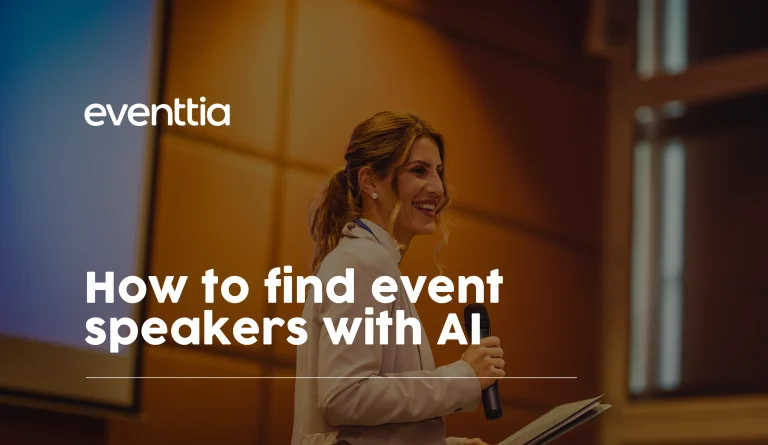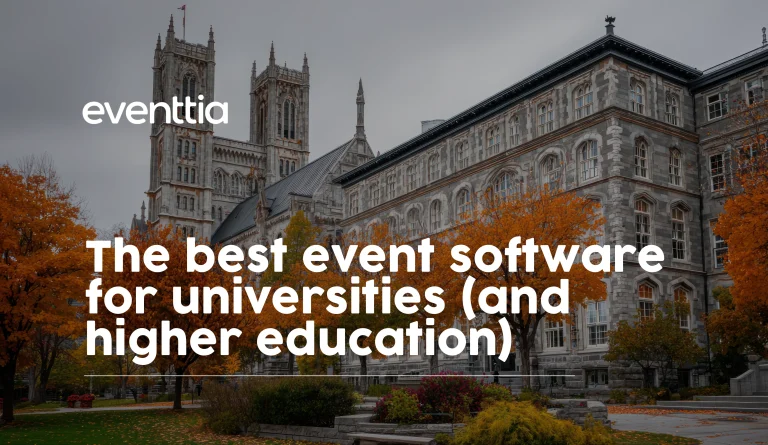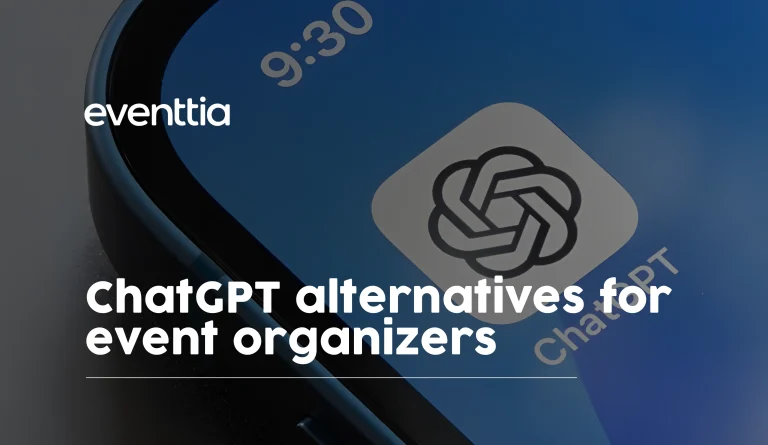What defines the success of an event? Famous speakers? In a way. But more important is what they tell during a speech and what you tell before and after an event. Content is the key.
Before an event, it helps to drive awareness, registrations, and ticket sales. Then, on the event day, it increases audience excitement. And lastly, content prolongs the interest and energy long after your event has finished.
All this is possible if you have a strong content marketing strategy, time, and budget. Paradoxically, but usually, problems come from the first. Unfortunately, there is no one-size-fits-all type of events strategy. Still, there are some efficient content practices you can use.
Below are guiding tips on how to build an effective content strategy.
What is a content strategy?
A content strategy is a set of messages you share with a target audience throughout organizing the event. These messages are not limited to text, but can also be in the form of audio, video, or images. Usually, a content manager is the one who takes care of building and implementing the strategy.
Apart from the statement itself, the content strategy answers the questions like where, when, and how to connect with your potential event participants. It includes journey maps, buyer personas, editorial calendars, analytics, and content governance in general.
The main goal here is to engage leads and keep them in the loop till after-the-event so that they share feedback with their friends and join your next gathering.
All these tasks you need to accomplish while building a content strategy might feel overwhelming, that’s why we suggest you leverage an event management platform like Eventtia to ease the tension.
A step-by-step guide on content strategy for events
1. Consider your goals
Before creating a strategy, make sure to clarify your goals. Add them to your content plan document to always keep them in mind when making decisions.
What’s the right way to do this? Specify your content strategy’s goal and provide detailed purposes for each piece of content. For example, it may look like the following:
Content strategy goal: Engage 200 paid event participants.
Pre-event video purpose: Generate 400 leads (btw, event lead generation requires you to apply a special approach).
Depending on the type of content and strategy stage, it will have different goals, like converting undecided potential attendees, selling last-minute tickets, or encouraging participants to share feedback on social media.
2. Know your audience and their pain points
After you clarified the goal of your content strategy, it’s time to think of your audience and their needs. In short, who are you going to talk to, and why should they listen to your message?
Here is a quick list of questions to answer before moving forward with a content strategy for events:
- Who is your target audience?
- How to reach them? (What online channels do they use?)
- Which industries do they work in?
- Do they have a specific demographic?
- What device do they use to view your message?
- What are they looking to get by joining the event?
Building your attendees’ avatars will help generate content ideas that actually speak to your audience by addressing their pain points.
If you don’t really know who you’re writing for, and just create generic informational content, it’s likely to fall flat. Prevent this by learning more about your audience. You can share a questionnaire or collect personal data details automatically as many other brands do.
This knowledge also gives you an opportunity to adjust the language you use to the majority of addressees. Another important detail is to create mobile-friendly content if mobile is the main device your prospective customers prefer.
In case your target audience is young people, keep in mind that they favor visual-led content more. And just like with any other news posts – write short paragraphs and sentences so that they are clear, concise, and memorable.
Also, if you know that your target audience prefers online meetings at the moment, then organize a virtual event. Trust me, if you do everything right, online meet-ups can still be productive and help participants learn and socialize.
3. Define FAQs to answer them with content.
Event content shouldn’t be long reads as people seek quick answers to their questions and immediately decide if they are interested in this event. Your task is to hit the bull’s eye with your message by anticipating users’ questions and capturing their attention right away.
One of the ways to do that is to create a comprehensive knowledge base with essential information, answering the most popular questions from users. This way, prospective customers and attendees can use it as a credible source any time of the day. Just define what topics you need to cover in the knowledge base and choose the right software to build it.
By learning the topics your audience is discussing online, you’ll understand better what type of content would be more valuable and catchy for them. Find the perfect balance between what you want to say and what your customers want to know.
Source: https://www.further.co.uk/blog/know-audience-how-why/
Think of the places where you can find FAQs from your leads. In case you need a hint, consider exploring Reddit and Quora.
Reddit, the 6th most popular website in the US, is a discussion network where users talk about different topics from business management to marketing and tech. People submit their posts, get upvotes from other members, and influence public opinion this way. All the posts are organized by subject into “subreddits” for easy navigation.
If you are crafting a content strategy for events, this is your perfect tool for listening to what your potential audience has to say. To do so, just participate in relevant subreddits. By writing a blog post that answers one of the most popular questions in your events niche and sharing it on Reddit, you can get a website traffic boost along with a couple of paying customers.
Quora is another Q&A website where people share and grow knowledge on any subject, from relationships with their parents to business decisions. Anyone can openly post on the platform, including CEOs or entry-level employees. This is another excellent way to learn what questions your potential customers may have.
4. Unique selling points to highlight in content.
In order to create irresistible content that no one can just pass by, leverage unique selling points (USP). In short, it’s the essence of what makes your offer better than competitors. Communicating your USP clearly and concisely is essential to converting leads into paying clients on your website or via other communication channels.
Before creating a content strategy, take a pen and a piece of paper and list your unique selling points to spot the best angles from which to present your event. Try to answer the questions below and see what makes your offer stand alone.
- Are you the only company in your city/country/niche to run events on this topic?
- Do you have a well-known speaker attending?
- What will participants get from your event that is unique?
- How will your event help attendees pursue their goals?
Think about the most prominent perks of your event and then introduce them as a strong reason to join your gathering. Also, being aware of the USPs can serve as a starting point for what kind of content you should create.
5. Define what types of content pieces you need to publish.
This paragraph is a natural continuation of the previous steps and in a sense sums them up. Based on your goals, customers’ expectations, and USPs, you can specify the types of content to include in your strategy.
For instance, if you have a well-regarded speaker on your agenda, then making an interview with them can be a great idea. At the same time, you can use their potent quotes in promotional content.
If what makes you special compared to other brands is the topic covered during the event, demonstrate it in your profound blog post.
Let’s look at another example from HubSpot content marketing strategy. The brand is very famous for its successful tactic that lures thousands of readers daily. Here are the types of content that HubSpot shares with users:
- Blogs
- Newsletters
- Videos
- Podcasts
- Resources
- Social Media Content.
In a nutshell, there are a few types of content for different strategy stages. Obviously, it’s not limited to this list, but I just want to give you a sense of the goals a particular type of content might have.
Pre-event stage:
- Blog posts/infographics/videos – to provide an overview of the event from every angle
- Speaker-driven content – to capture the attention of a particular speaker’s audience
- Promotional videos and images – to generate more leads by sharing visual event previews and promotions
Day of the event:
- Live-video – to enhance attendees’ and non-attendees interest in the event
- User-generated content – to incentivize participants to share event content
Post-event content creations:
- Wrap-up blog posts – to highlight the most notable moments and provide takeaways
- Video testimonials from participants – to give a brief summary of the event and boost lead-generation for the next meeting
- Press release – to establish your brand as an essential player in the industry.
6. Ensure a smooth and informed journey for your attendees. What links to add and where to lead? UTMs.
When reading your articles, watching videos, or coming across your promotional material online, customers might have questions about your content validity or their next move in order to attend your event. Make sure they can find fast and simple answers.
The best way to provide them with explanations and guidance within the content is to add more links. For example, if you publish statistic numbers, add a URL to the original source of information or official study report.
Also, leads might be interested in reading more about related topics or takeaways from previous events, so add links to these sources too. And, finally, after reading your catchy article, users might wish to buy a ticket (hurray!), so ensure it’s as simple as possible on your website. Otherwise, you risk losing a client forever.
When inserting links to internal sources, remember about adding UTMs (Urchin Tracking Module). It’s a great way to track your content marketing performance and see what selling points work for your audience and which fail to attract attention.
How do UTMs work? Briefly speaking, you just add a tag to the original URL, so that when a client clicks on this specific link, the tag is sent back to your Google Analytics for a report.
Lead your potential attendees to internal sources like:
- Official studies and reports conducted independently by your company
- Other topic-related content (videos, e-books, infographics, etc.)
- Takeaways from your previous events
- Registering link
But no customer journey can be smooth without consistent collaboration and strong teamwork at the company. To ensure that everyone is on the same page, brands use collaborative tools and look into Monday.com alternatives, even though it’s a popular solution it’s definitely not the only one.
7. Choose your main content channels. Landing page. Socials. Partners.
Every time we discuss creative content ideas, our Head of Content asks, “Okay, but how will we distribute this piece of information?” Because no matter how great your articles, video or any other content is, it will be just buried in digital content chaos if not distributed properly. That’s why here we talk about main content channels.
I’d say there are three main distribution channels:
- Search engine
- Social media
- Partners
The first channel is obviously Google and other search engines. Just think, 4.3 billion people on planet earth use Google, so doing everything possible to get your content ranked high is definitely worth the effort. Optimize your content and landing pages for the best result, so that interested users can find you easily when typing “business events in Warsaw” next time…
Speaking of social media, the trickiest part here is to pick the platform that customers love the most and promote your event there. The answer to this question is hidden in the second step of this list – knowing your audience. If you understand the preferences of your clients, you can easily choose the channel they visit most often.
The same applies to communication with clients. Use the channels your attendees prefer for chatting. For instance, if your potential leads spend more time on their laptops then consider leveraging the social media that offers a messenger app for Windows and Mac (FB Messenger, WhatsApp, WeChat, Slack, etc.).
If you need assistance with growing your social media channels, you can always turn to services for SMM and get help.
The third channel is partners. Who but you would know that the organization of events always involves partnerships? These are brands that often support you financially or provide a venue where the event is held in order to place their logo on your pamphlet and have a chance to chat with attendees. So, you can definitely ask them to add a post about your event on their social networks and make an announcement in their newsletter.
An example of a partnership between Coinsiglieri and Web Summit
8. Create the posting calendar.
In content strategy for events, a posting calendar is crucial as you usually have a limited time before the meeting. If you start promoting an event too late, you might miss out on many potential attendees. Also, if you don’t remind users regularly about an upcoming lecture/workshop/summit, they might lose interest even if they considered buying a ticket before.
At the same time, if you have a nicely planned content calendar that includes blog articles, social media posts, emails, and other materials, you can rest reassured that users will remember you and definitely join in case of interest.
So, when to start promoting an event? It’s advised to allow at least 6-8 weeks before the event to give people enough time to make a decision. Don’t forget to set up the email nurturing strategy, so that leads get letters from you and stay up to date with the upcoming event.
Here is an example of the posting calendar for event content strategy:
9. Set rules on who and how to engage with the audience at each campaign step. Think about hashtags, comments, and UGC.
While creating and sharing content is great, nothing upsets more than ‘0 comments/likes’ under your social media post or poor blog article engagement. That’s why the next step is definitely about engagement and tips on how to make readers interact with your content.
I risk sounding banal but take user-generated content (UGC) into consideration. This is basically the best way to make people respond to your messages. For instance, ask users to like and share your social media post to win two free tickets to your event.
This strategy can aid your marketing efforts and help get more potential leads. Hardly there is anything else that creates a pre-event buzz better than UGC which is so vital for a successful event.
Another thing that you should definitely do for better engagement is create a dedicated hashtag for your event only. Make sure to use it every time you share posts on social media and encourage speakers and other participants to use it too, especially during the happening! Here you can make another contest and offer a desirable prize for the most creative photo from the event with your original hashtag.
Another tactic that always works is tagging speakers and partners on your social media posts. Usually, they respond in the comments and share your post with their audience.
10. Establish the metrics to track content success.
It’s crucial to evaluate your event content marketing performance by tracking the key metrics. Of course, the main indicator is the number of people who registered for the event, but it’s not the only metric.
For social media, likes, comments, and shares can show you how well your content is doing and if users are interested in it.
As for the website content and blog articles, there are a number of metrics to track. Let’s have a look at some of them:
- Web traffic source
- Time on page
- Bounce rate
- New/returning visitors
You can easily monitor these metrics with the help of the Google Analytics tool. Try to stay on top of how your content is performing and adjust it accordingly if you notice engagement decreasing or staying low.
Google Analytics content performance report
Conclusion
With these tips on effective content marketing for event management, you can develop long-lasting event experiences. Content can help you build communities of like-minded people passionate about the same things. Regular post-event content keeps your attendees engaged with what you are doing now and in the future, making your promotional activity easier for the next event you run.
Discover how Eventtia helps world-leading brands digitize and scale their events
Learn moreShare





